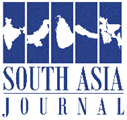To maintain its status quo in international politics, China under the nomenclature “One Belt One Road” (OBOR) revived it age-old strategy called conspirational strategy. This strategy believed to be introduced by Admiral Zheng in the fifteenth century. The main understanding was to get close to its neighbors and find new areas with the desire to establish political and trade ties with them. To fulfill this ambition, Admiral Zheng sent many travelers in quest of searching new regions around the South China Sea, the African continent, and the Indian Ocean. At present juncture, project OBOR is a manifestation of Chinese intentions to become a next global power as well as forging a new regional role (Yu 2017). China has been successful in stimulating many countries to become a partner in utopian economic corridor, i.e., OBOR on the pretext that every partner will surely get benefits out of it. Put differently; China is eager to link and influence every part of the world from Europe to China through this (OBOR) initiative.
Currently, using providing aid and infrastructural support and defending regional states at the global front, China asserting the same strategy to create political and economic supremacy. Throughout the Southeast Asian region, China indulged in funding many development projects. New in the series Nepal, by signing OBOR has officially become a part of Beijing’s ambitions towards reviving Silk Road trade routes. After Nepal, Bangladesh was second to enter into this project. India exceptionally is the only country in South Asia who doesn’t get allured by Chinese offers.
According to Yu Hong (2017), the present Chinese foreign policy has the clear resemblance of former Chinese President Hu Jintao’s administration (Yu, 2017). By forging close regional and international ties in the form of OBOR China is trying to counter US presence, which has been prevalent in the region for a long time. Therefore this initiative is not spontaneous, rather a result of long-term planning which is not only strategic but acquired the economic goals to change the geopolitical landscape of the hitherto prevailed order. The subsequent increase in its production at home enabled China to the offered world an important trading partner and then successfully got a strong hold on the international market. After accumulating enough economic and financial gain, China went forward seeking various multilateral and regional cooperation associations, confirms rather a continuity in its foreign policy prospects.
Nevertheless, the initiative such as OBOR can be seen as an extension of this continuity. The current target is to connect China and the Eurasian landmass through both land and sea routes. Interestingly, the road under this project would start from Beijing and reach towards and around all neighboring countries of India (Roche, 2017).
Being the first country to join the club OBOR in 2017, Nepal becomes a prominent player on the list of vital stockholders. Especially, Nepal’s geographical proximity is utterly important for China as it served as a gateway in the region of South Asia. By preconizing, the entry of Nepal in OBOR project, Foreign Minister of Nepal Mahat hoping that this move would strengthen the relationship between the two countries. He said, “Road and railway connectivity is essential for us, and we want investment for the same. Nepal now requires a significant boost in foreign investment and that Nepal is optimistic about reaping benefits after becoming part of the Chinese initiative” (Giri, 2017)). The Minister further stated that “under this project Transit, Logistic systems, transport network, will be developed that will help to pave the way for other foundational structure like railway, road, and airways services” (ibid).
The importance of OBOR Project lies in the fact that it is not as economical as it is projected, but have its ‘samrik’ importance. Thus, it is quite obvious that Nepal’s entry into OBOR fetched it geostrategic importance along with investment opportunities at home front. From the Chinese point of view, by endorsing OBOR initiative, Nepal could act as pressure tactics against India. In such scenario, India’s passivity towards OBOR seems difficult because any happening in its neighborhood has a direct impact on its security aspect. Therefore Chinese side projected OBOR as salutary for India having too difficult to resist with. But on the actual ground, China knew very well that India is a vital market for its products. The demand for Chinese products in India is more than Bangladesh or Myanmar. Facing several trade barriers in export, China desperately wants India to join the Silk Route project and consented towards Bangladesh-China-India-Myanmar (BCIM) corridor. But India in very beginning denied such possibility on the ground that it’s a part of China silk route.
For many scholars and diplomats across the region, New Delhi should keep in mind its economic interest via OBOR in case if Nepal ceases its operation. By joining OBOR India shall use Nepal as a reference point if the change in regime occurs among OBOR stakeholder states. Many states in South and Southeast Asia too will follow India if it falls in line. But the largest democracy in the world, India knows the implication and the intentions of Chinese initiative very well (Jha, 2017). It might be true that India may lose its significance and influence in Nepal due to the strategic leverage that China could offer to Nepal through OBOR. But pertinent to keep in mind that in the long term it’s Nepal which will have to keep at stake it’s hard-earned Sovereignty. In future no matter whose government reigned in power, Nepal will have to face enigmatic elements being involved in the masquerade called OBOR.



0 Comments
LEAVE A COMMENT
Your email address will not be published